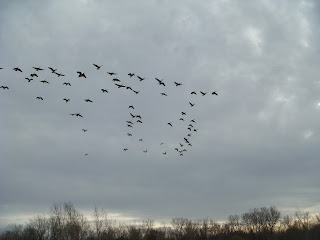POST 323 25NOV2017
CANADA GEESE
THE LAST GOOSE
SẢI CÁNH THIÊN NGA
|
|
POST 323 25November 2017
From
The Thursday Messenger
|
|
|
|
“Health is the greatest
gift,
contentment is the greatest wealth, a trusted friend is the best relative, Liberated mind (Nibbana) is the greatest bliss.”
SWQ
(SWQ:
Safest Way of Quoting, Buddha)
|
|
|
|
Blog www.clubmasterhoang.blogspot.com
POST 323 25 November 2017
THE LAST GOOSE
(ENGLISH VERSION)
|
|
|
THE
LAST GOOSE
This evening The sky seemed darker The wind colder The Universe empty When the last goose was leaving Its nostalgic honk fell on me I looked South The goose was gone Letting me stay North Soon snow is coming …
Charles
Phan Hoang , November 2017
|
|
|
Blog www.clubmasterhoang.blogspot.com
POST 323 25 November 2017
SẢI CÁNH THIÊN NGA
(VIETNAMESE VERSION OF THE LAST GOOSE)
|
|
|
SẢI CÁNH THIÊN NGA
Chiều nay trời
buồn lặng
Gió lạnh vút
Không gian rỗng
toang
Cánh ngỗng cuối
cùng bay đi
Tiếng kêu não
nề
Đổ xuống tự
thinh không
Ta đứng một
mình nhìn miên man
Thiên nga bay
khuất trời Nam
Bỏ lại ta, một
mình phương Bắc
Tuyết sắp xuống
rồi …
Charles Phan Hoang , November 2017
|
|
POST 323–25 NOVEMBER 2017
CANADA GOOSE
|
|
*Canada Geese are common and
increased between 1966 and 2015, according to the North American Breeding
Bird Survey. The total North American population in 2015 was between 4.2
million to over 5.6 million.
*The big, black-necked Canada
Goose with its signature white chinstrap mark is a familiar and widespread
bird of fields and parks. Thousands of “honkers” migrate north and south each
year, filling the sky with long V-formations. Flights usually begin at dusk,
but may begin any time of day, and birds fly both night and day.
*Canada Geese eat grain from
fields, graze on grass, and dabble in shallow water by tipping forward and
extending their necks underwater. During much of the year they associate in
large flocks, and many of these birds may be related to one another. They
mate for life with very low “divorce rates,” and pairs remain together
throughout the year. In spring and summer, geese concentrate their
feeding on grasses and sedges, including skunk cabbage leaves and eelgrass. Individual
Canada Geese from most populations make annual northward migrations after
breeding. Nonbreeding geese, or those that lost nests early in the breeding
season, may move anywhere from several kilometers to more than 1500 km northward
*The oldest known wild Canada Goose was a female,
and at least 33 years, 3 months old when she was shot in Ontario in 2001. She
had been banded in Ohio in 1969.
* Canada
Goose threat displays may involve head pumping, bill opened with tongue raised,
hissing, honking, and vibrating neck feathers. When an intruding goose
doesn’t retreat, geese may grab each other by breast or throat and hit each
other with their wings. Fighting may result in injuries.
Source: Web site Canada Goose
|
END OF POST 323 25NOV2017







































